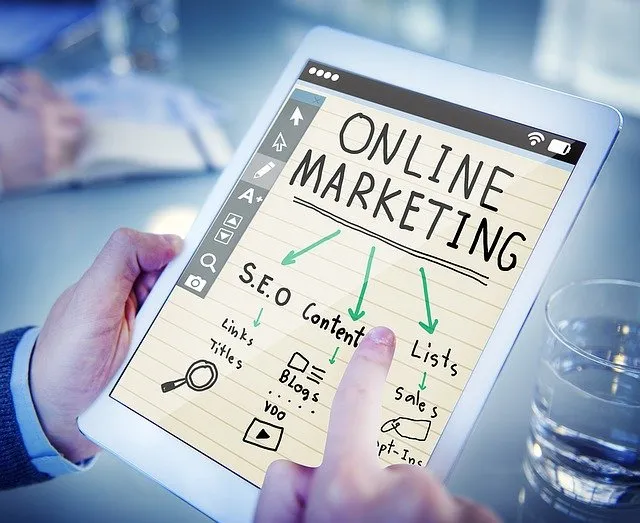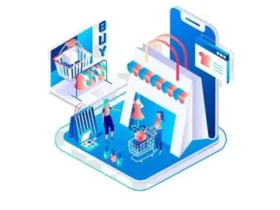What is Online Marketing?
Online marketing, also known as digital marketing, has become indispensable for companies who want to reach their key customer demographics at the right time, in the right place, with the right sales pitch for their products, on the right device through various online channels. The use of digital marketing channels for building customer relationships and long-term loyalty is essential for brand building.
Online Marketing Campaigns
The major components on which online marketing strategies are formulated comprise SEO (Search Engine Optimization), paid advertising (PPC), social media marketing, email marketing, content marketing, and affiliate or referral marketing. These online marketing methods bring the prospective customers into the company’s marketing funnel, which ultimately leads to purchasing their product or services. The benchmark of an effective online marketing campaign is the ROI (Return on Investment). Online marketing is therefore strategized with clear goals with estimates of CPA (cost per acquisition) to achieve the desired return on investment and profits.
SEO helps a company’s website and products to appear at top positions when searched on search engines such as Google, Yahoo, Bing, Yandex, etc. Data analysis through Google Analytics, Search Console, and other SEO tools can help a company gain optimum SEO results. Paid Advertising (PPC) on Google and Bing is considered one of the best methods to increase sales and conversions. However, paid advertising on online channels can be costly, and therefore, proper budget planning and audience targeting are crucial. Email marketing and newsletters with catchy subject lines help bring repeat customers.
Optimized social media campaigns on sites such as Twitter, Facebook, Instagram, Pinterest, and YouTube are required for brand awareness and promotions. Content marketing through blogs, articles, infographics, slideshows, e-books, and promotional videos is essential to capture customers’ attention. Affiliate or referral marketing is a good word to mouth promotional strategy.
A professional-looking website with the best user experience is a must to attract more customers and generate business through online marketing.
Customer acquisition and retention are one of the main goals of online marketing. Many companies have online membership or loyalty programs to retain customers and increase their market share. Giveaways or sweepstakes programs that provide free products or samples to customers help e-commerce companies gain customer confidence and create brand awareness. Discounts and cashback offers are necessitated by the fierce competition in the e-commerce industry.
Availability cascade is fundamental to online marketing
Availability cascade works on the principle of “repeat something long enough, and it will become true.” Online marketing helps create a narrative about the business and establishes its brand value by increasing the repetition of its brand name in public discourse. When a website, brand, or product name is referenced repeatedly on multiple online channels, people are inclined to think highly of it through a self-reinforcing cycle. The content and message promoted through SEO, PPC, affiliate or influencer networks, and social media buzz influence customers’ buying decision.
Key Elements of Online Marketing-
-
SEO (Search Engine Optimization)
Search Engine Optimization, by definition, means optimizing a website or webpage for search engines like Google, Bing, Yahoo, Yandex, etc., and achieving top rankings in search results (SERPs) for specific keywords. SEO is the most cost-effective technique to get a large number of people to visit a website without spending money on paid advertising. SEO has two major components- on-site SEO and off-site SEO.
On-Site SEO-
Search engines like Google primarily care about user experience. Search engines want to show users the best possible search results for their queries and match their search intent. On-Site SEO (also known as On-Page SEO) is about optimizing all the elements on a website to help the webpage rank higher for desired keywords in the search results. On-page SEO is performed by enhancing the quality of content, site structure, HTML, JavaScript codes, CSS, etc., on the website.
Off-Site SEO-
Off-Site SEO (also known as Off-Page SEO) deals with external signals from other websites, forums, or social media platforms that help search engines determine the reliability, popularity, authority, and relevancy of a website. Getting relevant backlinks from reputable and authoritative websites increases the chance of ranking on top search result positions.
-
Paid Advertising or Pay per Click Advertising (PPC)
Paid advertising is the fastest and easiest method to gain lots of traffic and leads. Google Ads and Bing Ads are best for online advertising the website’s products/services in various ad formats such as responsive text ads, product listing ads, display ads, image ads, and video ads on Google and Yahoo/Bing network respectively. Content and native ads platforms such as Taboola, Criteo, and Outbrain are ideal for promoting articles and remarketing the products. Paid social media ads through Facebook Ads, Twitter Ads, Pinterest Ads, etc., are preferred for building brand awareness and generating social signals for the website quickly.
-
Social Media Marketing
Social media presence is vital to generate brand awareness and connect with customers and potential buyers. Social media signals are also one of the ranking factors for search engines. When more and more number of people like, comment, or share content /website URLs on social media, the better the website ranks on search engines. Building and maintaining social media profiles on all major social media platforms such as Twitter, Facebook, LinkedIn, Instagram, Pinterest is the best way for a business to connect and promote products/services to the targeted audience demographics.
-
Email Marketing
The first step for email marketing is to get the users to subscribe to newsletters. Offering discounts on the first purchase or providing useful information in white papers, e-books, or buying guides are popular techniques to encourage people to sign up for the company’s newsletter. Personalized newsletters help build strong relationships and gain the loyalty of the customers. Loyal customers respond positively to future promotions and upsell efforts. They are more likely to leave positive reviews and refer other people to the business.
-
Marketplaces, Affiliate and Referral Marketing
Marketplaces – The eCommerce marketplaces such as Amazon, Walmart, and eBay are the best places to sell products and reach millions of people. Even if the business has its own eCommerce website, it is still a good idea to sell on eCommerce marketplaces to build brand visibility and gain customer trust. Depending on the product type, it is possible to achieve good traffic to the company website from these eCommerce marketplaces. Creating an eBook and selling it on Amazon Kindle and digital marketplaces works well for blogs and service-based websites.
Affiliate Marketing – Setting up an affiliate program for business through ShareASale or Commission Junction can get a lot of potential customers via affiliate links on different content blogs and coupon websites. On the other hand, if the business is willing to be an affiliate, it can earn a commission for recommending other websites to its own website visitors.
Referral Marketing – Referral programs such as refer-a-friend are designed to generate word-of-mouth publicity and incentivize users to tell more and more people about the business. When combined with social media, referral programs can generate more leads and sales than any other marketing program.
Online marketing tips for growing your online business
- Define your goals:
Clearly identify your marketing objectives, whether it’s increasing brand awareness, generating leads, driving website traffic, or boosting sales. This will help you tailor your strategies accordingly. - Define your target audience:
Understand who your ideal customers are so you can tailor your marketing efforts to reach them more effectively. - Create a professional website:
Your website is the foundation of your online presence. Ensure it is visually appealing, user-friendly, and optimized for search engines. - Content marketing:
Produce valuable and engaging content such as blog posts, videos, infographics, and ebooks to attract and engage your target audience. Share your content on social media and other platforms to increase its reach. - Optimize for local search:
If you have a physical location or serve a specific geographic area, optimize your online presence for local search. Claim and optimize your Google My Business listing, include your address and contact details on your website, and encourage customers to leave reviews. - Influencer marketing:
Collaborate with influencers or industry experts who have a significant following and can promote your products or services to their audience. This can help increase brand visibility and credibility. - Online reviews and testimonials:
Encourage satisfied customers to leave reviews and testimonials on platforms like Google My Business, Yelp, or industry-specific review sites. Positive reviews can build trust and attract new customers. - Analyze and track your results:
Use analytics tools like Google Analytics to measure the performance of your marketing campaigns. Monitor key metrics such as website traffic, conversion rates, and engagement to identify areas for improvement and refine your strategies. - Stay updated:
The online marketing landscape is constantly evolving. Stay abreast of industry trends, new technologies, and best practices. Attend webinars, conferences, and read reputable blogs or publications to stay informed and adapt your strategies accordingly.
Read more- Mystery Marketing and Controversial Marketing – Shock and Awe Strategy for Digital Marketing
Online marketing is an ongoing process, so be consistent, adapt to changes, and stay updated with the latest trends and strategies in your industry. Continuously test, analyze, and refine your digital marketing strategies to achieve optimal results for your business.

Hunaid Germanwala is a digital marketer and content creator at Health Products For You since 2014. He has an MS from Ulm University in Germany. His mind is always buzzing with creative ideas and is eager to explore new perspectives. His motto in life is “Better to Light the Candle than to Curse the Darkness.”














Leave a Reply